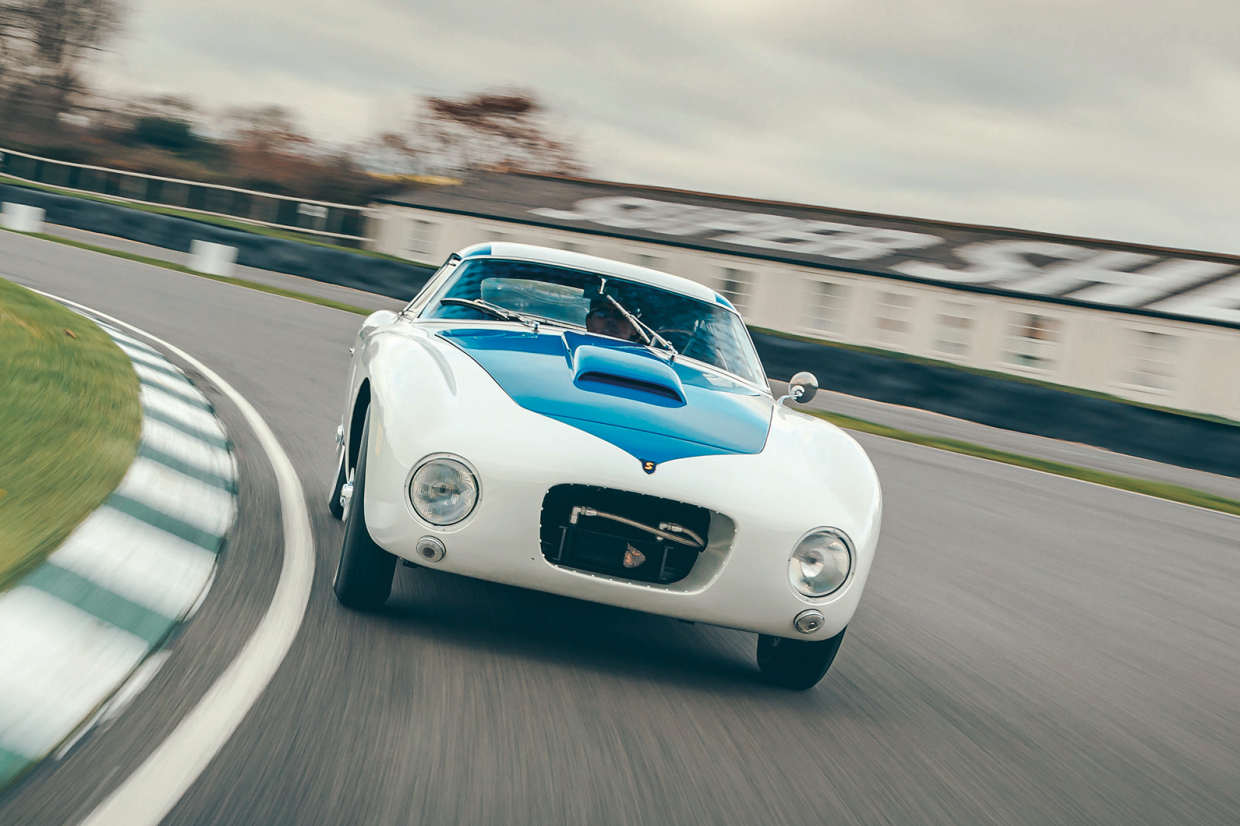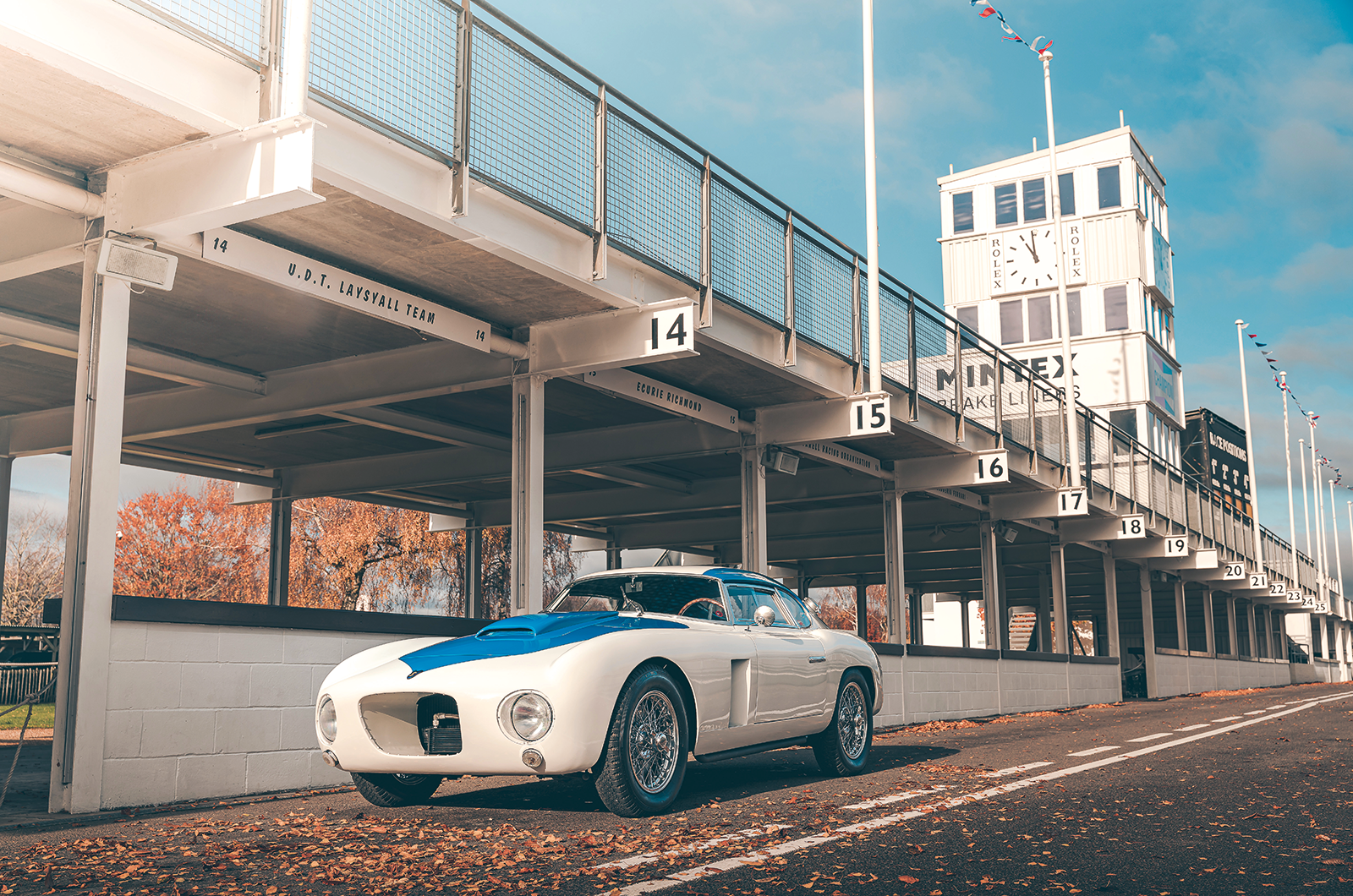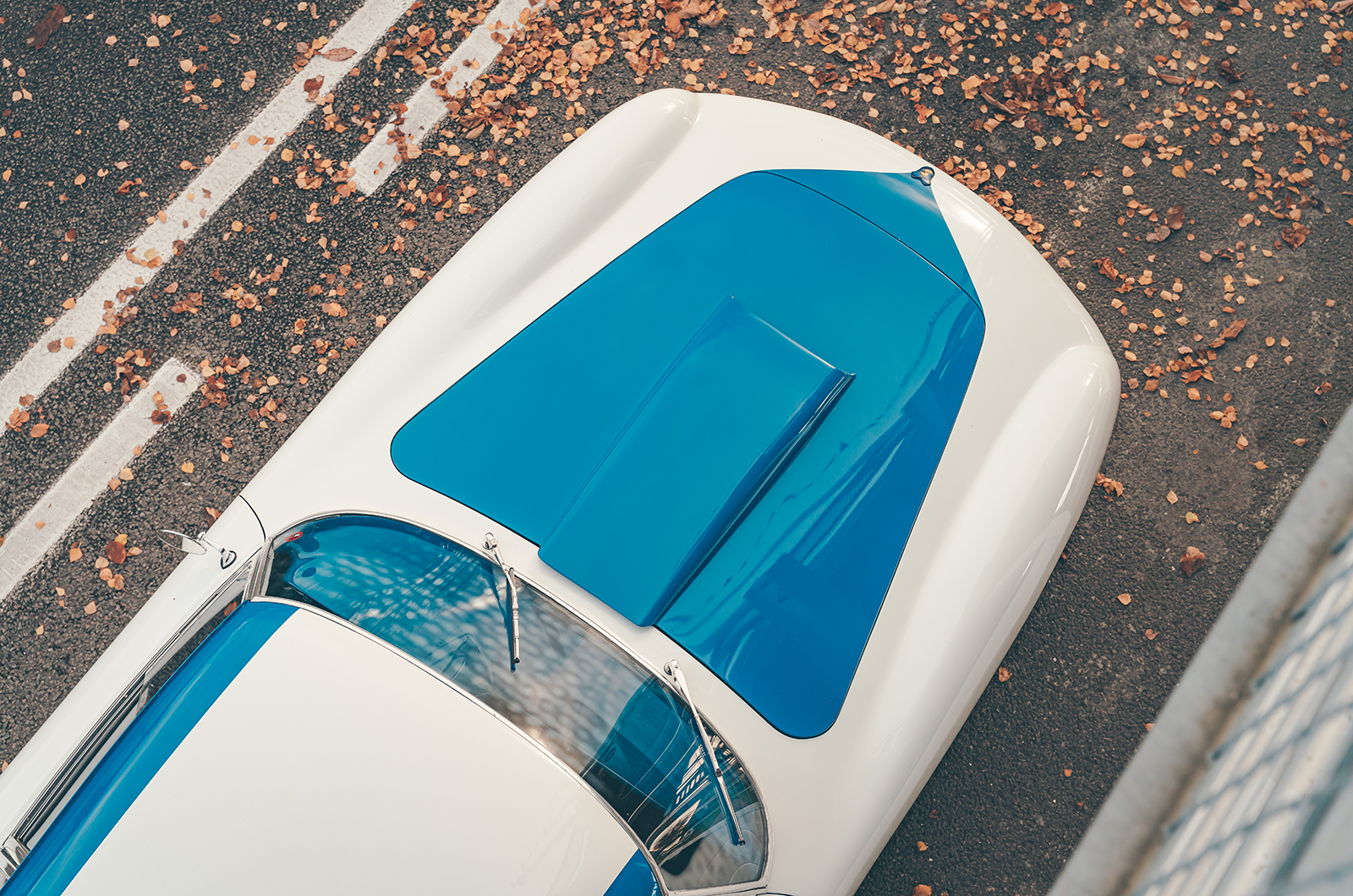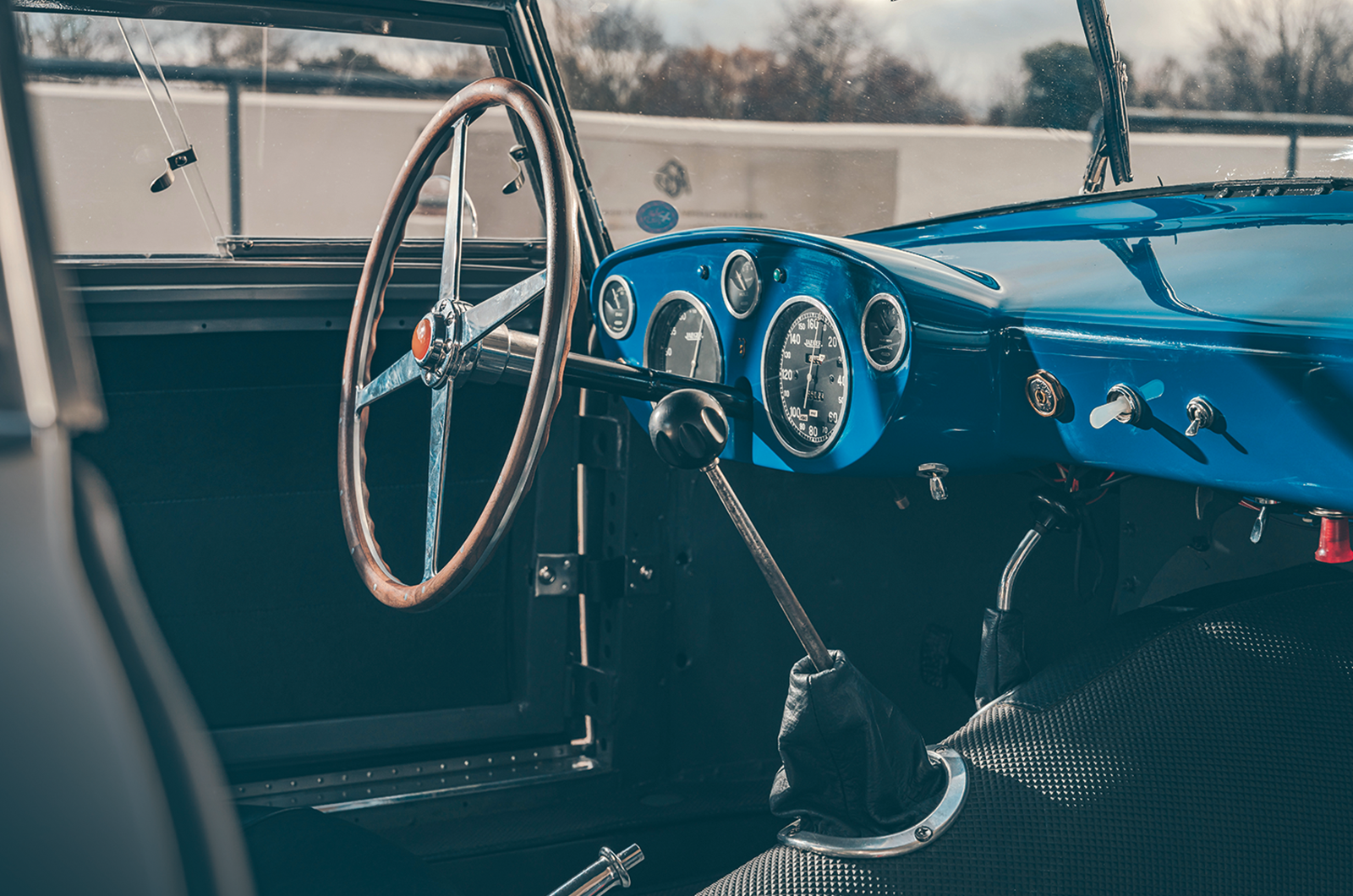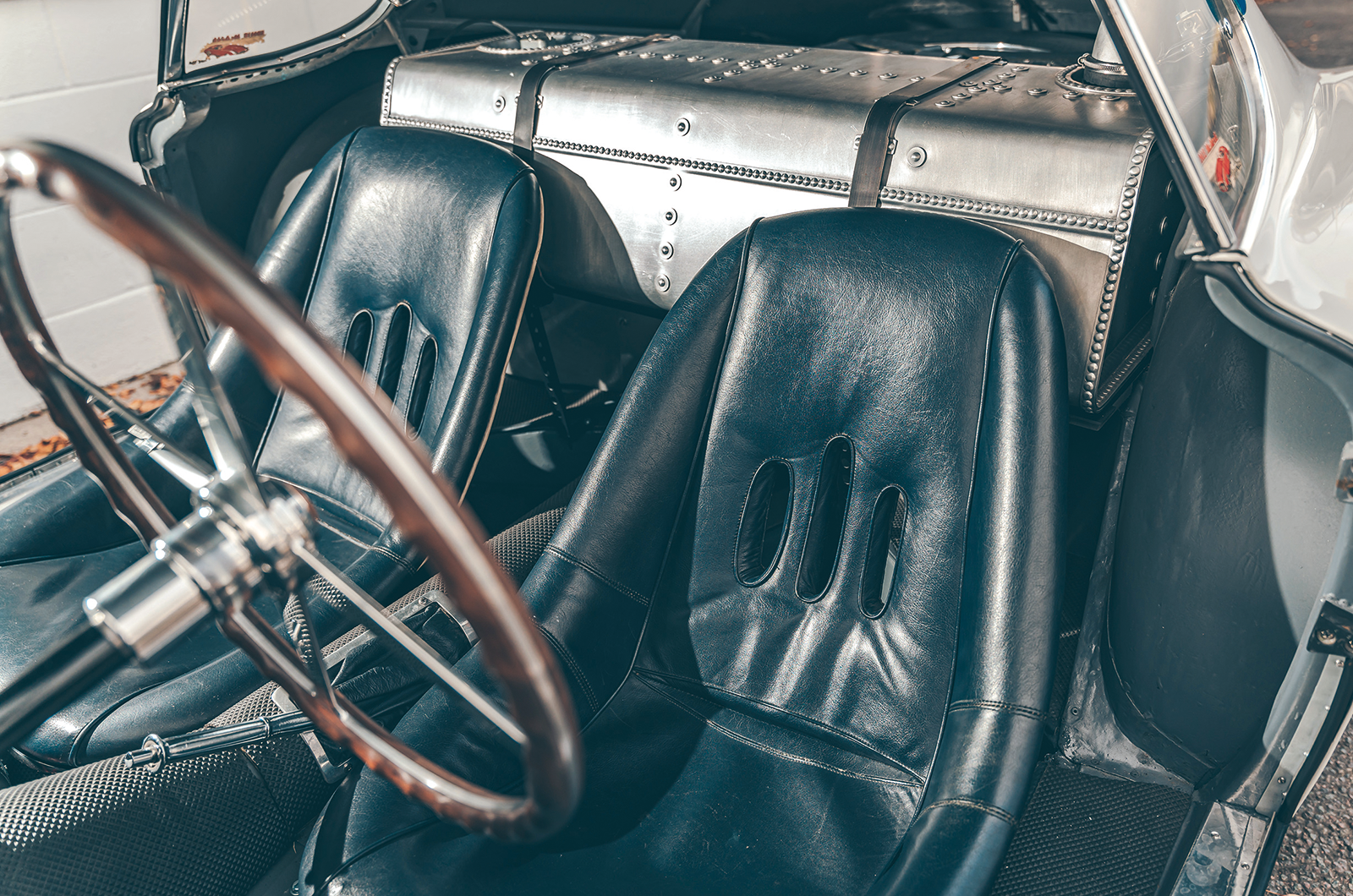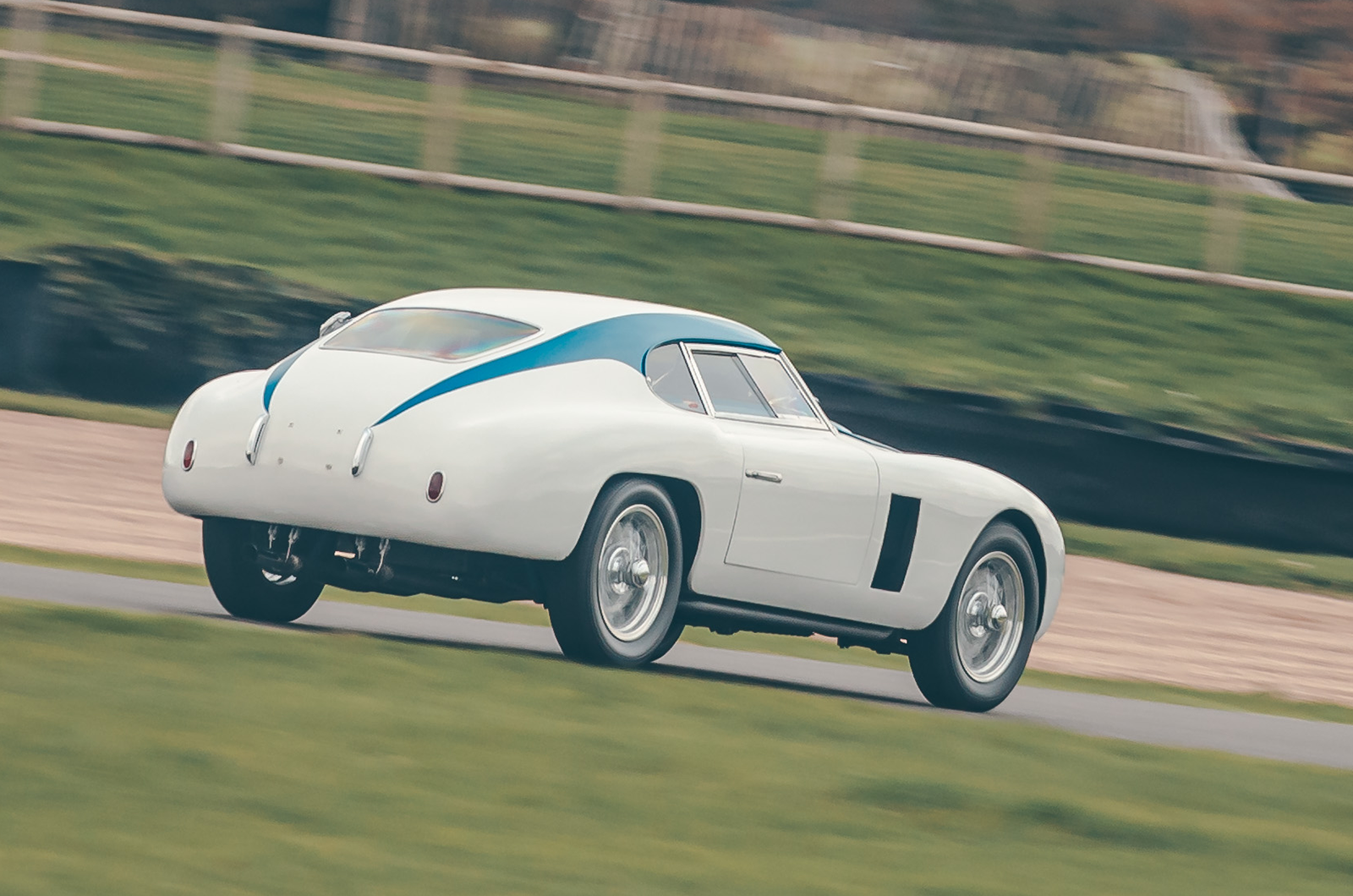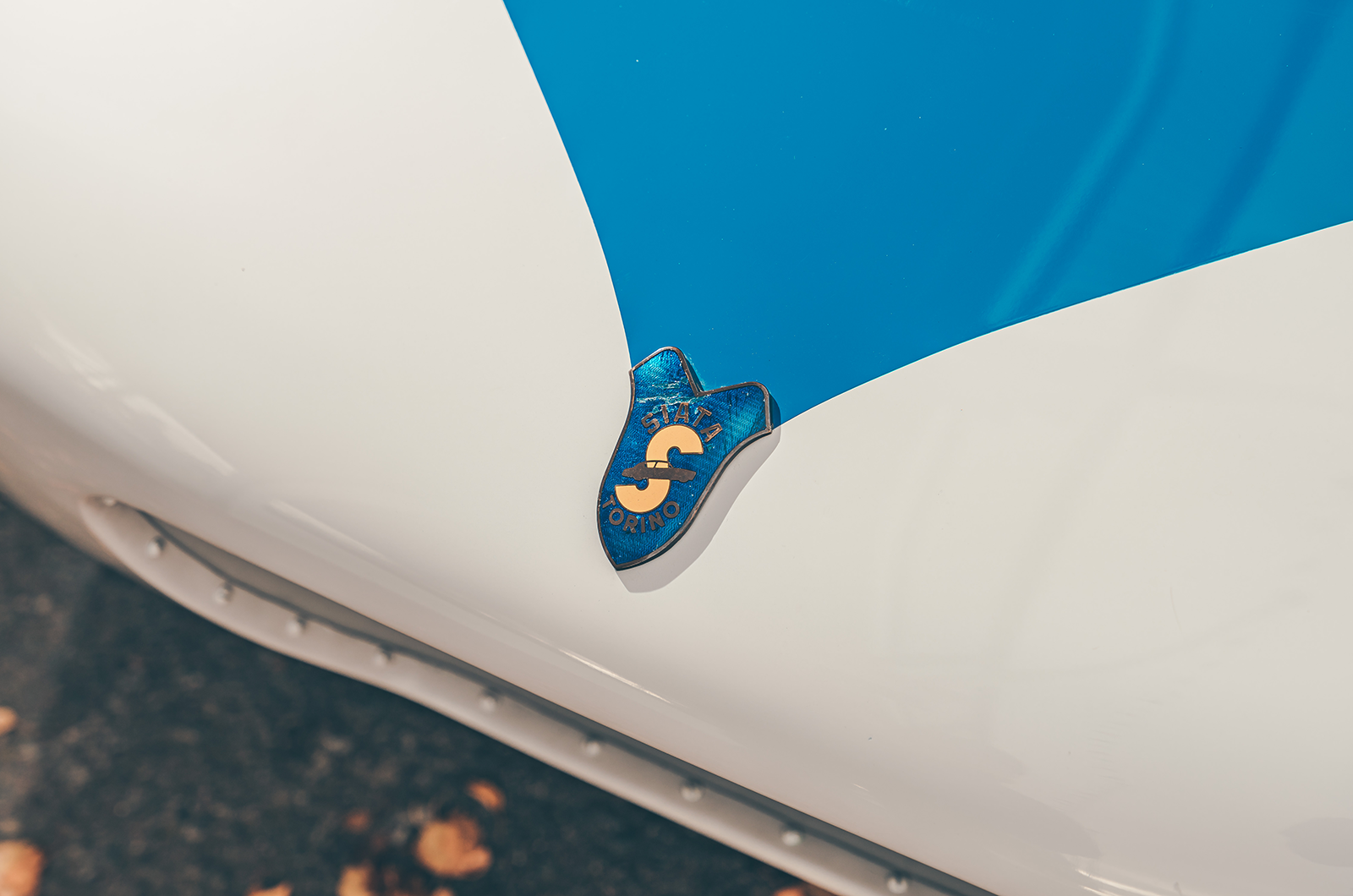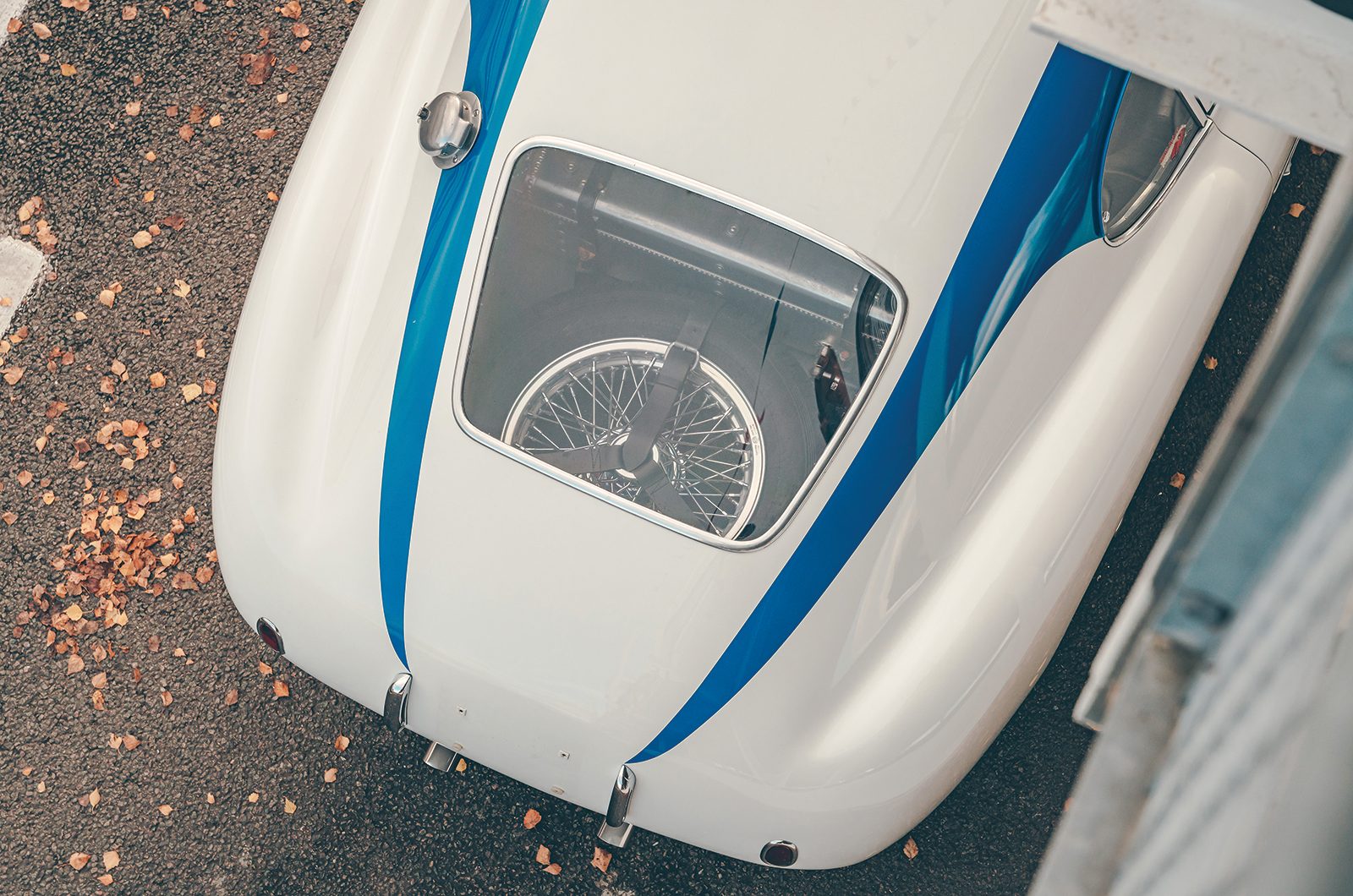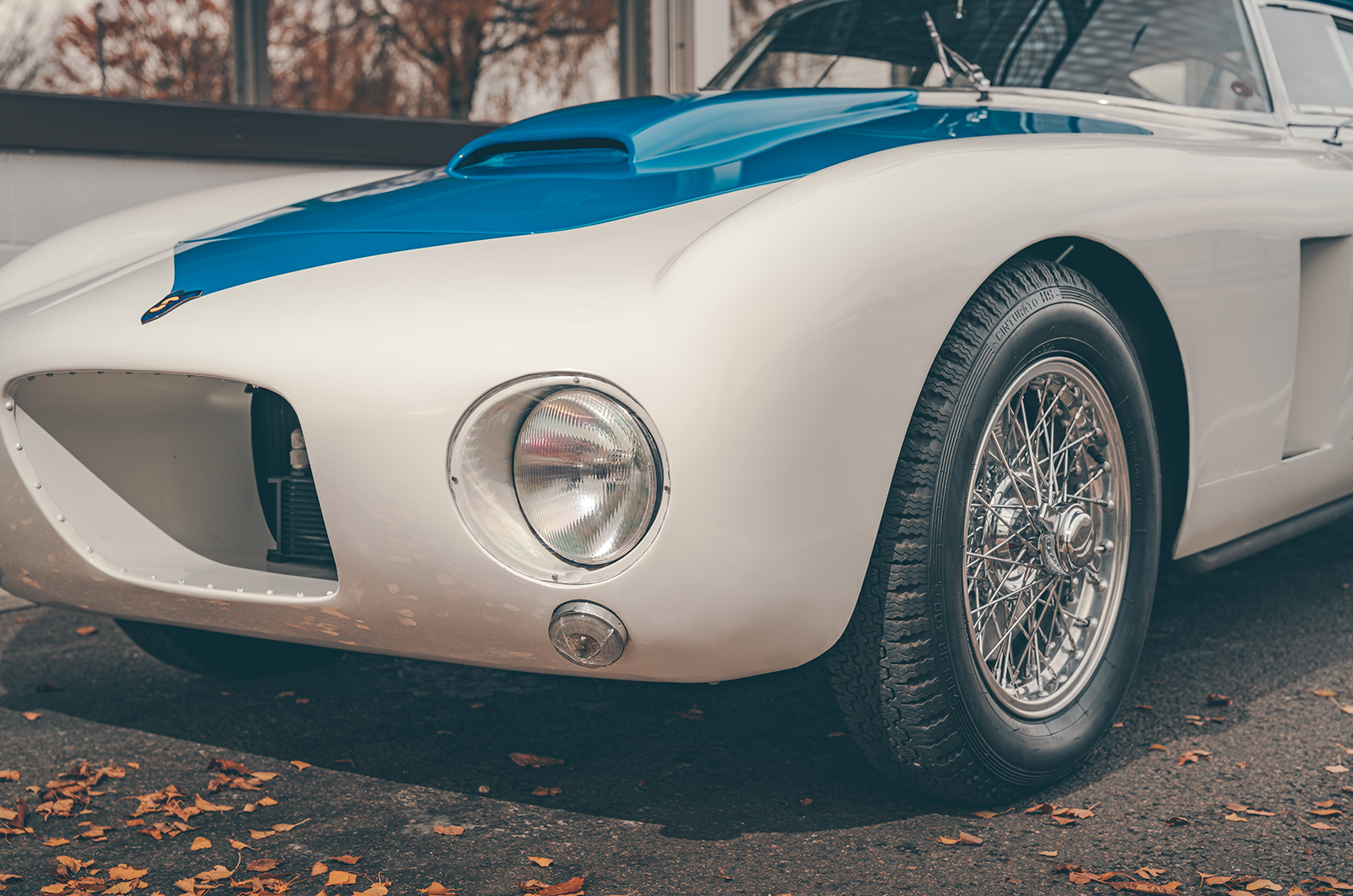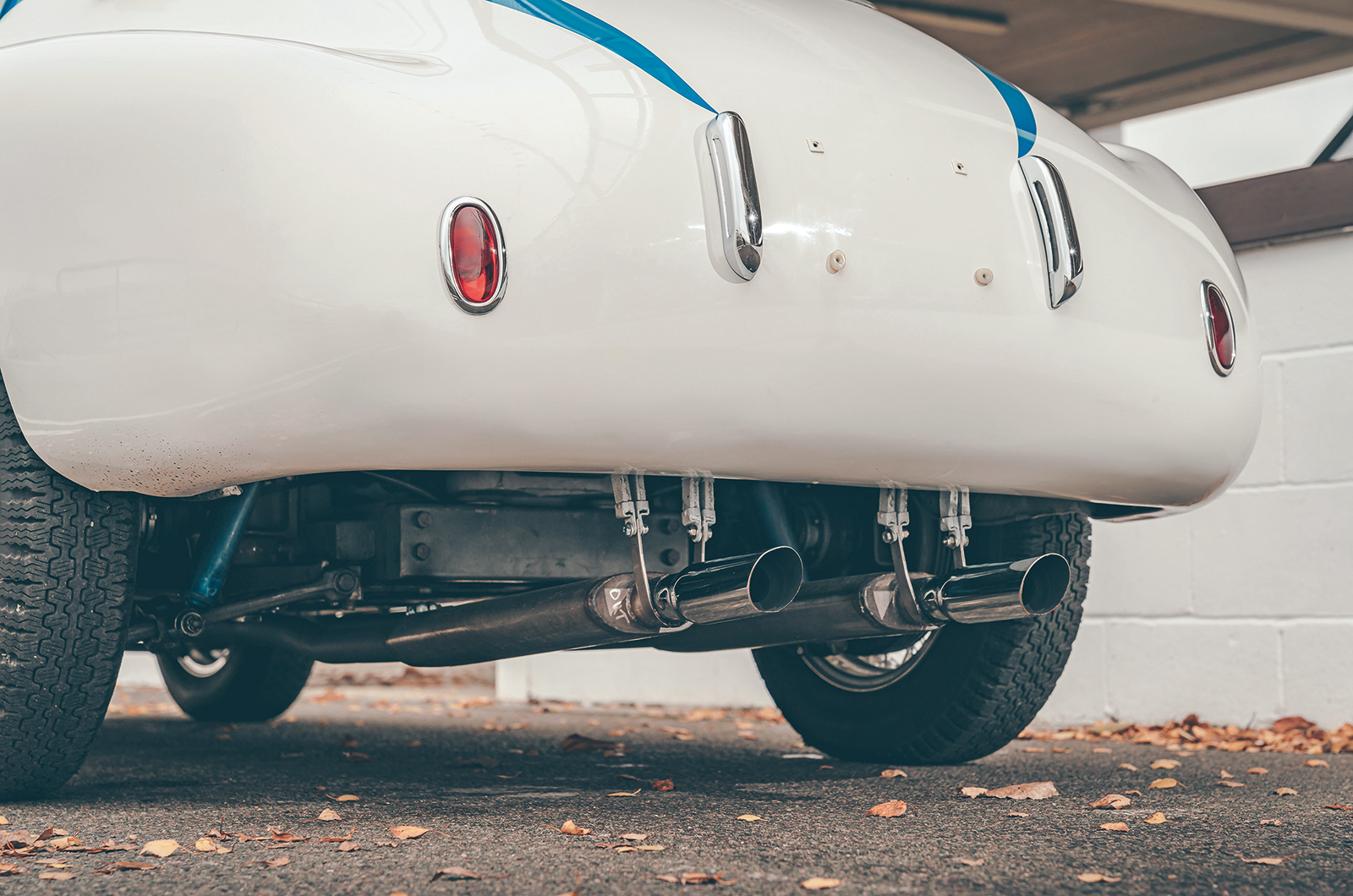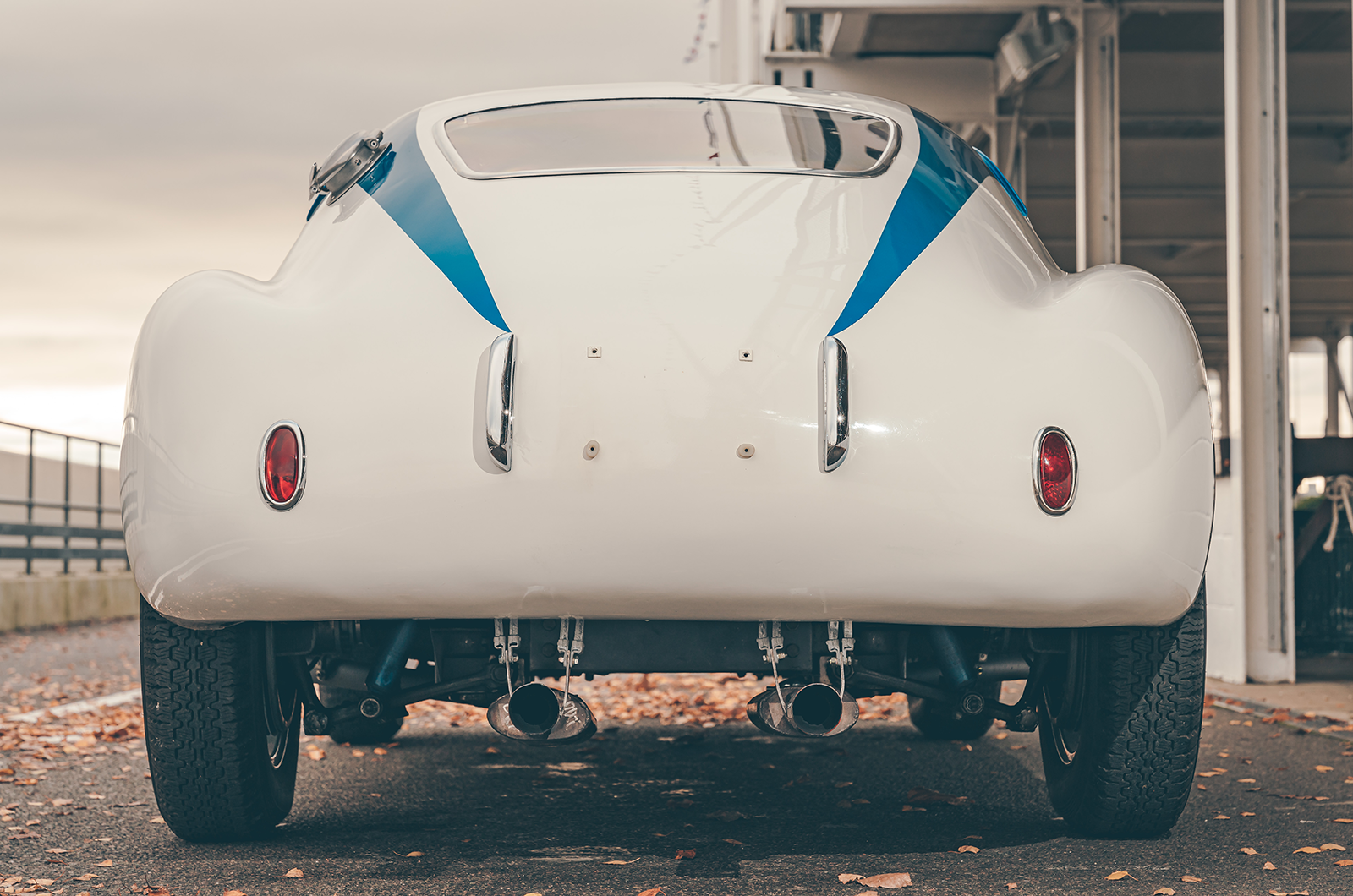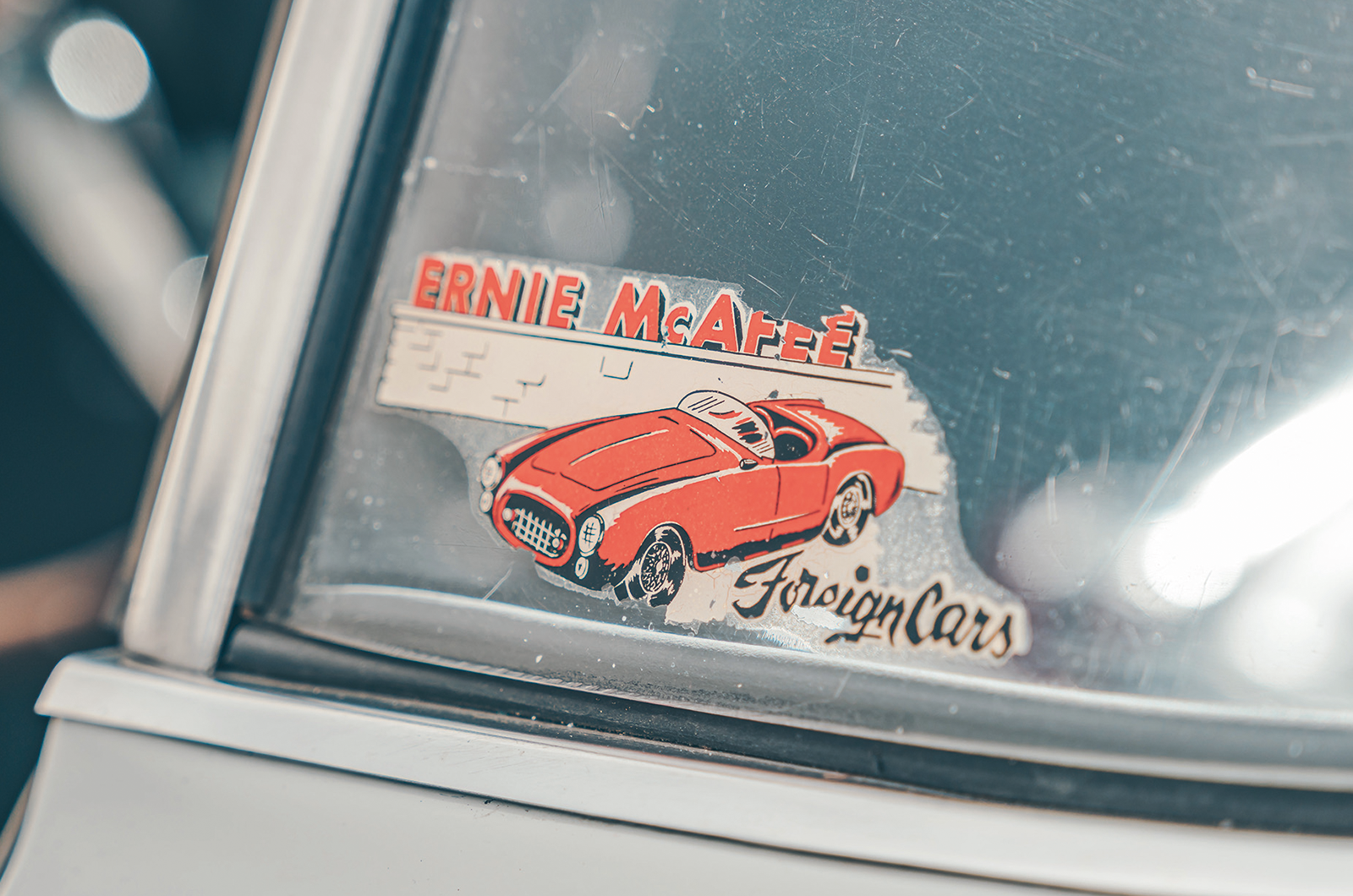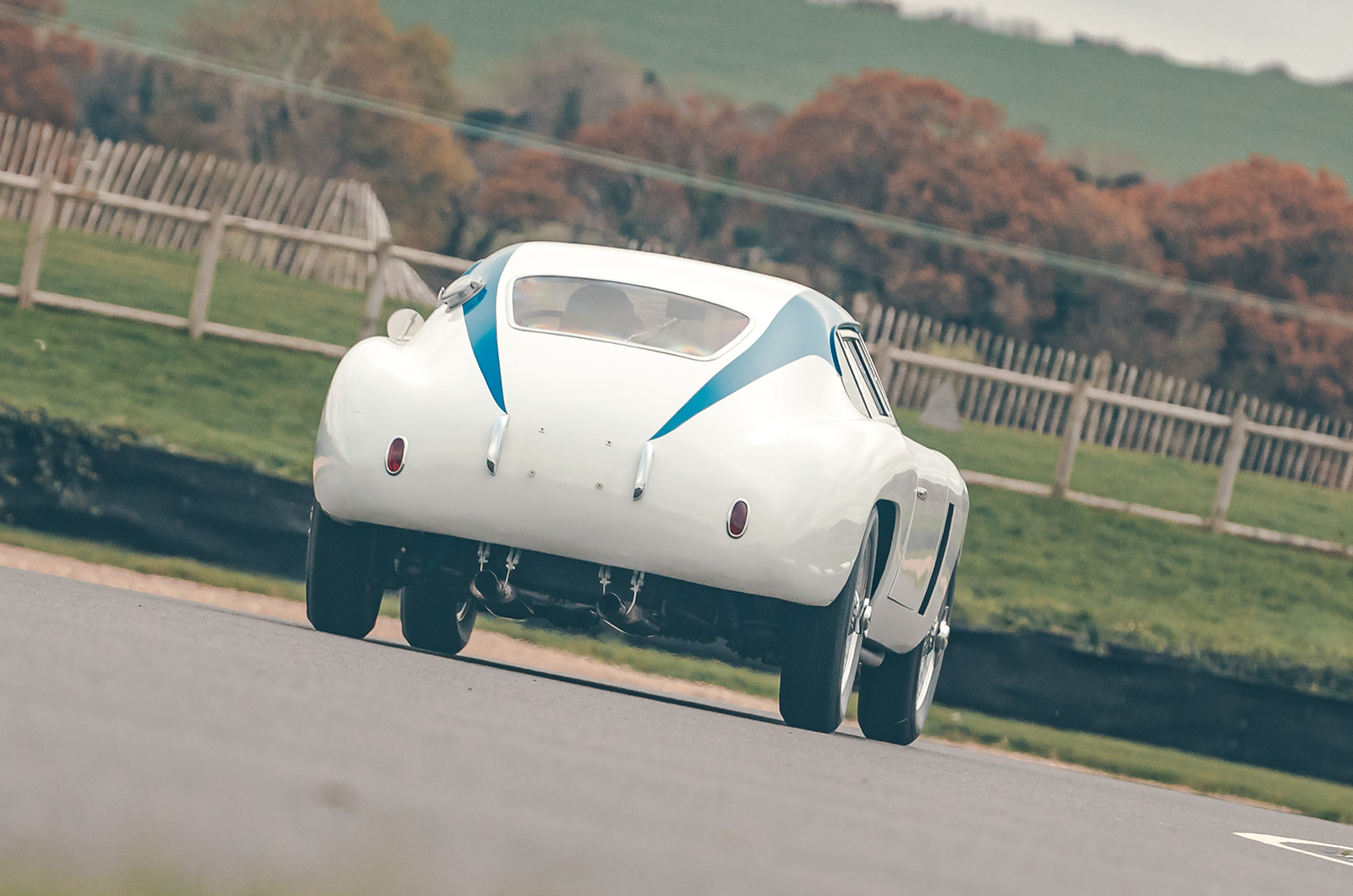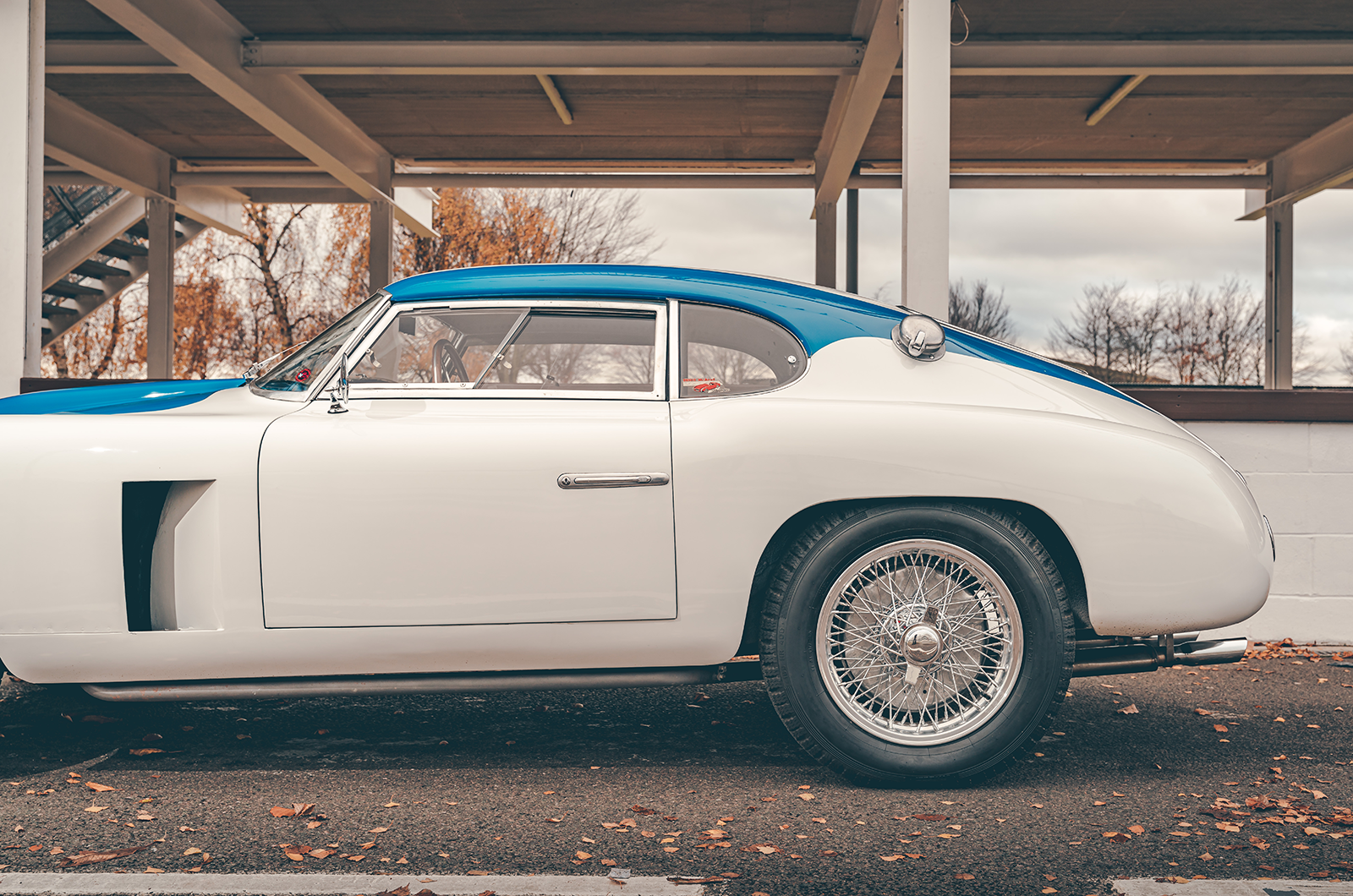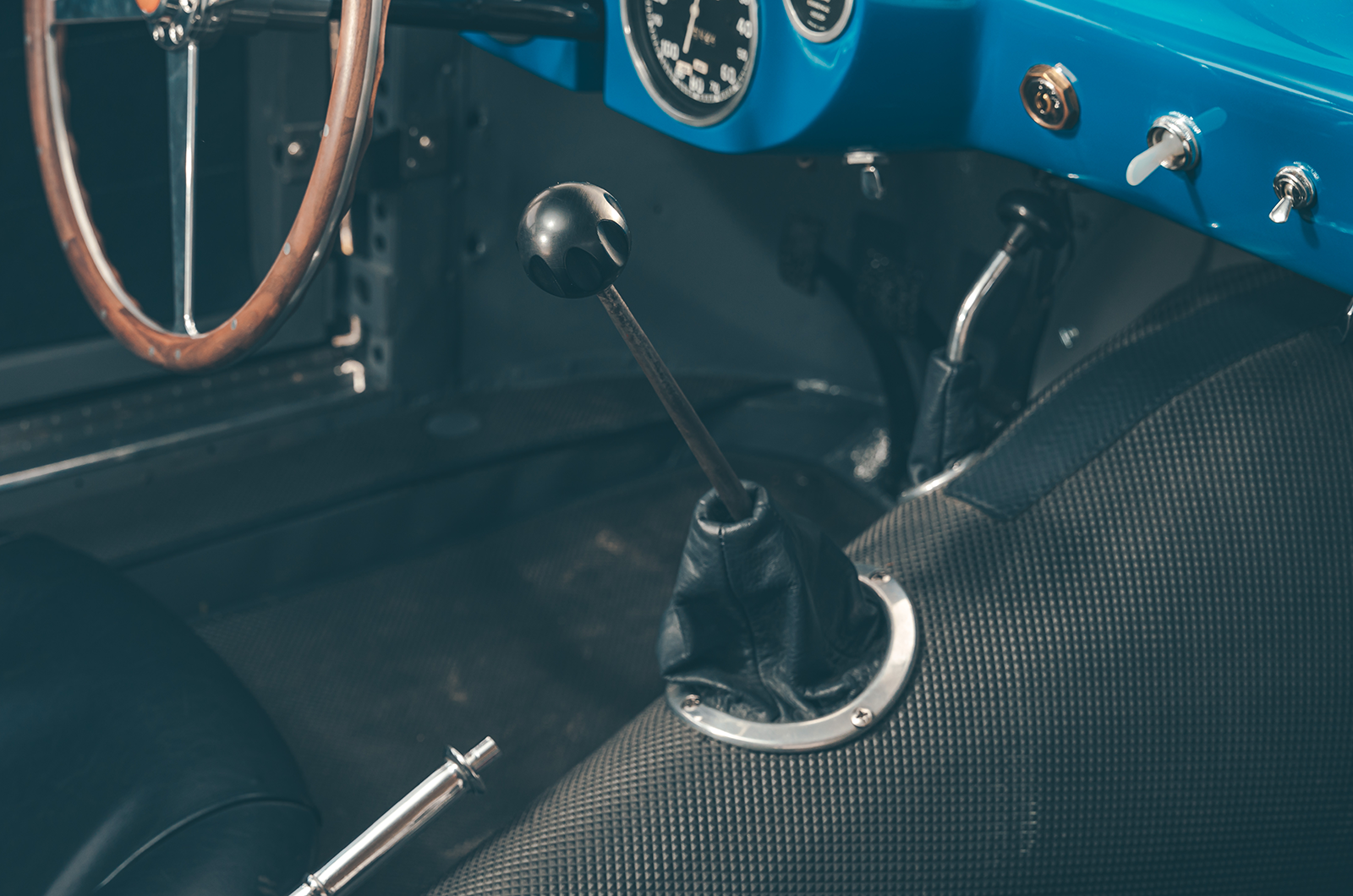Thankfully, however, the modifications were never completed.
The creator of the sleek body is a mystery, but likely Siata’s own in-house artisans
Stripped of its paint, the bare-aluminium Siata coupé sat at the back of Carroll’s bodyshop on Melrose, but its lithe, dramatic-looking profile continued to attract attention, particularly among local ArtCenter students on afternoon walks.
Carroll, frustrated with the nosy young visitors, eventually taped a handwritten sign on the top of the windscreen warning: ‘Knuckle Sound Testers. This car is constructed of 22-gauge aluminum. Keep hands off or be charged for damage.’
The engineless Siata eventually returned to Belt’s backyard, where collector-car auctioneer and racer Rick Cole discovered it in 1982.
Fascinated by the stripped coupé, Cole contacted Anton ‘Tony’ Krivanek of Vintage Racing Services.
The Siata’s twin pipes emit a rich bark
Krivanek’s knowledge of Italian cars included an acute interest in the rare 8V Siatas, and he rushed over and instantly recognised McAfee’s unique Mexico coupé.
Encouraged by this confirmation, Cole did a deal to save it, and over the next two years Krivanek restored the Siata and carefully undid the planned modifications of Belt and Moore.
Through contacts and multiple ‘wanted’ ads in magazines, Krivanek managed to track down the original engine and five-speed gearbox.
The original Ernie McAfee transfer on this Siata
During the restoration, Krivanek discovered the car was built around the box-section-type chassis used on the beautiful 208 Spiders rather than the tubular specification of the Farina- and Balbo-built coupés, of which just nine were made.
McAfee had initially planned to run the special-order coupé in the 1953 Carrera, but Siata founder Giorgio Ambrosini and his son Renato felt time was too tight.
As a result, McAfee decided to run a 208 Spider with its engine sleeved down to 1600cc for the smaller sports car class.
Hop Up magazine, after it had witnessed the fanatical lightening carried out by McAfee, christened it the ‘Holey Terror’.
This Siata classic car is a rare survivor
The obsession with lightness included slimming down essential tools and even drilling the ignition key.
McAfee went on a strict diet and decided to drive solo, just as Fangio did in the Lancia D24.
This wasn’t out of concern for passenger safety, but to further cut weight.
The Spider was quick and after the first leg was running fifth, but on the next section, from Oaxaca to Mexico City, after he’d passed the leading Porsche, the red roadster charged off the road on a blind dog-leg and centre-punched a concrete kilometre stone.
Siata 208 CS coupés rarely race on circuits nowadays
Jean Behra in his Gordini had also lost it at the same spot, but in contrast the Siata looked unscathed, although the heavy impact had cracked the steering box and bent a front chassis crossmember.
Road & Track reporter Dean Batchelor stopped to check that McAfee was okay and discovered the unsurprisingly shaken driver among the local crowd.
After a welcome cigarette, Batchelor gave him a lift back to Oaxaca to collect the trailer.
“We’re coming back next year,” joked McAfee, “but I might have to drill a few more holes.”
You sit low in the Siata 208 CS coupé’s pared-back cabin
After removing the coupé’s body, Krivanek discovered extensive drilling all over the Spider-type chassis and, knowing the legend of the ‘Holey Terror’, he began to think the Mexico had been built around the 1953 entry, which had long since disappeared.
Research was more of a challenge back in the internet-free 1980s, but it was Belgian historian Tony Adriaensens who eventually confirmed in his remarkable OttoVu books that these two Siatas were separate cars.
The ‘Holey Terror’ Spider was already back racing regularly in California before the coupé was delivered in 1954.
The builder of the unique bodywork remains a mystery.
The Siata’s five-speed gearbox helps make the most of the raucous Fiat engine
Giovanni Michelotti is believed to have styled the Spider for Bertone, so it’s possible he was involved with refining the Mexico coupé, but there is no record of Balbo building it.
Most Siata experts, including Adriaensens, conclude the one-off was built in-house at Siata’s workshops on Via Leonardo da Vinci in Turin, to McAfee’s instructions.
Owner Cole, encouraged by Krivanek, was keen to return the Mexico to the track, and in 1984 Steve Earle invited it to the Monterey Historic Automobile Races.
In an authentic field of pre-1955 sports cars, Cole diced with Lancia Aurelias, Arnolt-Bristols, Alfa 1900s and Jaguar XK120s to finish an impressive fourth.
The Siata 208 CS coupé feels sharp and balanced
The sight and sound of the sleek white-and-blue Siata gunning over the brow and down Laguna Seca’s famous Corkscrew, the 2-litre V8’s twin exhausts crackling on overrun, impressed fans, who would gather in the paddock all weekend around the mystery coupé.
Three decades after it first arrived in California, the interest would have amused McAfee.
Had he survived the Pebble Beach crash, I can just imagine the 65-year-old hero helping Krivanek fine-tune the dual four-barrel Webers for Cole’s Laguna debut in 1984.
Cole entered the coupé in the Monterey Historic Races several times and in 1991, after a further rebuild by Phil Reilly’s team, it crossed the Atlantic for the Mille Miglia.
‘The sight and sound of the sleek white-and-blue Siata impressed fans, who would gather in the paddock around the mystery coupé’
Later owner William Bauce generously auctioned the Siata with Christie’s, with all funds going to The Scripps Research Institute.
After its return to Europe, outings have included the Tour Auto, for which it was fitted with a grille inspired by the 208 roadster design.
The car’s latest custodian is a German enthusiast who tasked Hamburg specialist Steinke Sportwagenservice to carry out the latest rebuild, before showing it at the 2023 Concours of Elegance, its debut display in the UK, where its lithe lines and crisp exhaust note wowed more fans.
This Siata dazzled at 2023’s Concours of Elegance
Today you never see Siatas race; the lucky owners prefer the Pebble Beach Concours to show off their mint survivors.
McAfee’s old workshop on Cahuenga Boulevard has long gone under the 101 Freeway, his plaque on the old Pebble Beach road course has vanished and specialist Krivanek passed in 2020, but the survival of cars such as the fantastic 208 CS Mexico coupé are a lasting testament to their talents and passion.
Long may the chipped McAfee garage transfers on the Perspex side windows remain in his memory.
Images: Max Edleston
Thanks to: Fiskens; Tony Adriaensens; Goodwood Motor Ciruit
Enjoy more of the world’s best classic car content every month when you subscribe to C&SC – get our latest deals here
READ MORE
Osca MT4: Maserati in miniature
Maserati 300S: in Fangio’s footsteps
Alfa Romeo 1900 Super: tackling the Mille Miglia on a budget
Mick Walsh
Mick Walsh is Classic & Sports Car’s International Editor
